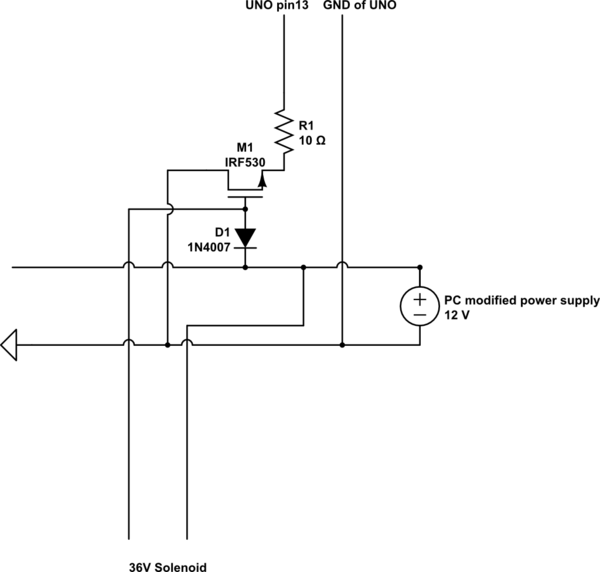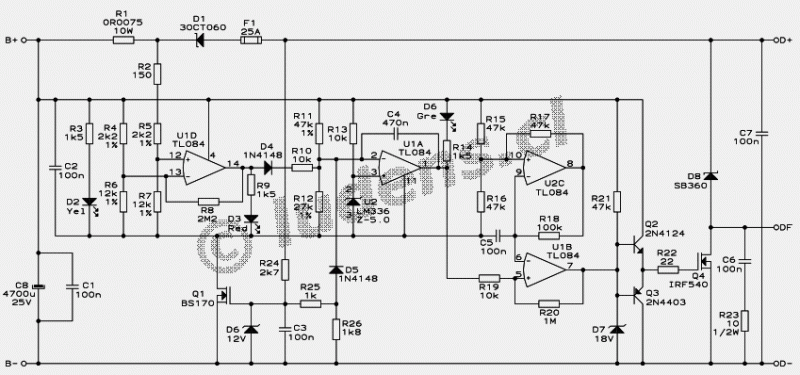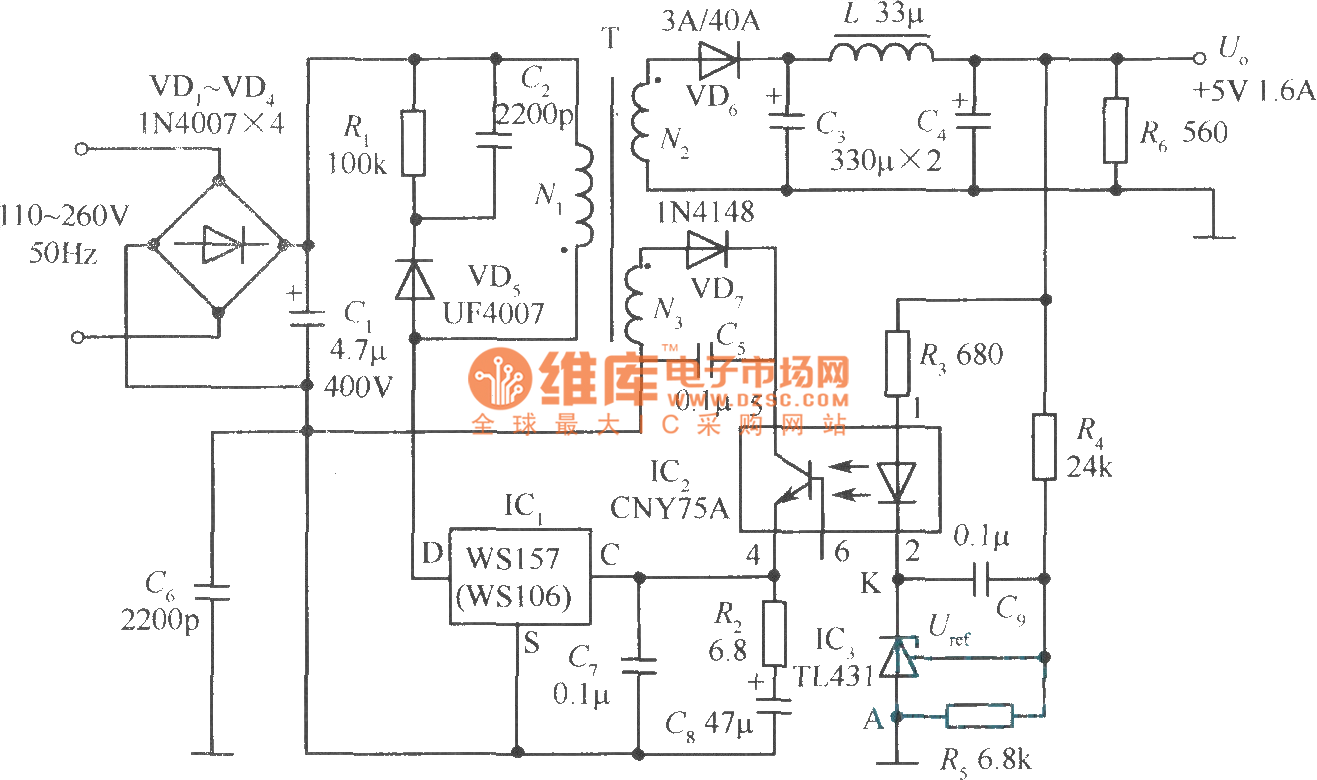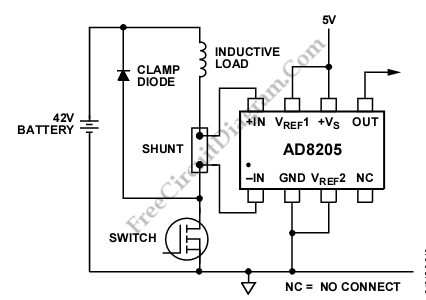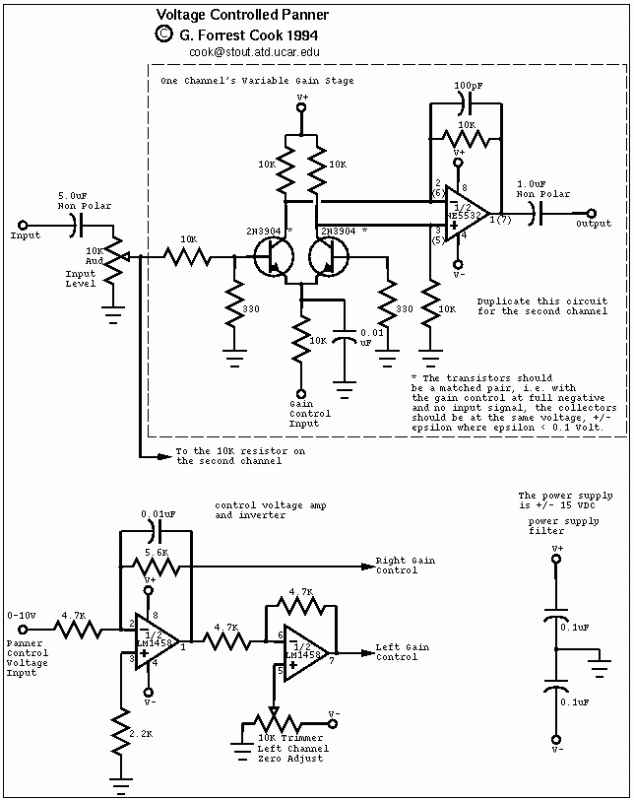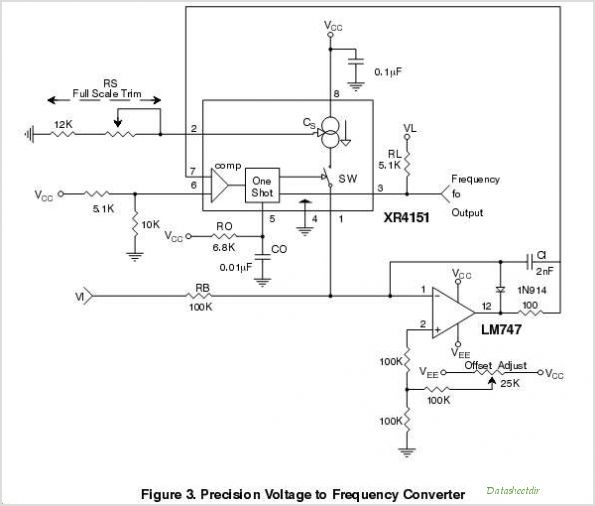
An Efficient Low-Power Arduino Switching Voltage Regulator
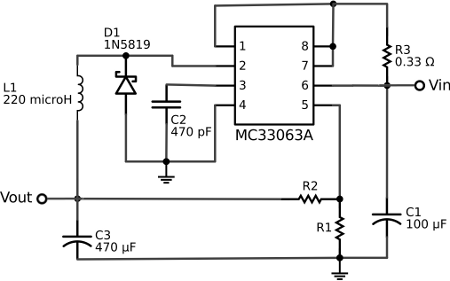
The voltage regulator integrated into the Arduino Uno is a linear-type regulator, which exhibits poor efficiency. When operating the ATmega238 at 5V with a 9V battery, nearly half of the battery's energy is wasted as heat by the regulator. This document presents a DC/DC switching-type voltage regulator circuit that can be utilized with a breadboard Arduino and is significantly more efficient than a standard 7805 regulator. The switching regulator employed is the Texas Instruments MC33063A. This integrated circuit can be configured with external components to function as a boost regulator (to increase voltage), a buck regulator (to decrease voltage), or an inverting regulator. In this instance, it is configured as a buck regulator to reduce a 12V battery pack to supply a 3.3V breadboard Arduino and XBee radio. The voltage regulator circuit schematic is provided. In this design, R1 is set to 100 kOhm and R2 to 200 kOhm, resulting in an output voltage of approximately 3.75V to power both an ATmega328 and an XBee Series 1 radio. Depending on the values of R1 and R2, this switching regulator circuit consumes about 2.5 to 3.5 mA of current when not supplying a load, in contrast to approximately 10 to 15 mA for a 7805 linear regulator. By implementing this regulator circuit design, the battery life is extended to nearly two weeks.
The Texas Instruments MC33063A is a versatile DC/DC converter capable of performing various voltage regulation tasks. When configured as a buck regulator, it efficiently steps down the voltage from a higher level, which is essential for powering low-voltage devices like microcontrollers and wireless modules. The circuit typically includes external components such as inductors, diodes, and capacitors, which are crucial for smoothing the output voltage and ensuring stable operation.
In this design, the selection of resistor values R1 and R2 is critical for determining the output voltage. The formula used to calculate the output voltage (Vout) in a buck configuration is given by:
\[ V_{out} = V_{ref} \times \left(1 + \frac{R2}{R1}\right) \]
where \( V_{ref} \) is the reference voltage of the MC33063A, typically around 1.25V. By choosing R1 = 100 kOhm and R2 = 200 kOhm, the output voltage is adjusted to approximately 3.75V, which is suitable for the ATmega328 microcontroller and the XBee radio module, ensuring reliable operation.
The efficiency of this switching regulator is markedly higher than that of linear regulators, as it minimizes power loss by converting excess voltage into usable current rather than dissipating it as heat. This results in lower current consumption, particularly when the load is minimal, thereby prolonging battery life significantly.
In summary, the implementation of the MC33063A as a buck regulator not only enhances the efficiency of the power supply for the Arduino and associated components but also extends the operational lifespan of the battery, making it an ideal choice for portable, battery-operated projects.The voltage regulator built onto the Arduino Uno is a linear-type regulator and is horribly inefficient. If you are running the ATmega238 at 5V using a 9 V battery, approximately half of the battery`s energy will be dissipated as heat by the regulator.
This post demonstrates a DC/DC switching-type voltage regulator circuit that can be use with a b readboard Arduino and is much more efficient then a typical 7805 regulator. The switching regulator used is a Texas Instruments MC33063A. This IC can be used with external components to make a boost regulator (to step up voltage), a buck regulator (to step down voltage), or an inverting regulator. Here I am setting it up as a buck regulator to step down a 12 V battery pack to run a 3. 3 V breadboard Arduino and XBee radio. Here is the voltage regulator circuit schematic. In my design, I am using R1 = 100 kOhm and R2 = 200 kOhm giving me an output voltage of approximately 3.
75 V to power both an ATMega328 and an XBee Series 1 radio. Depending on the values of R1 and R2, this switching regulator circuit uses about 2. 5 to 3. 5 mA of current when not powering a load. This compares to about 10 15 mA for a 7895 linear regulator. By using this regulator circuit design, my battery lasts for almost two weeks. 🔗 External reference
The Texas Instruments MC33063A is a versatile DC/DC converter capable of performing various voltage regulation tasks. When configured as a buck regulator, it efficiently steps down the voltage from a higher level, which is essential for powering low-voltage devices like microcontrollers and wireless modules. The circuit typically includes external components such as inductors, diodes, and capacitors, which are crucial for smoothing the output voltage and ensuring stable operation.
In this design, the selection of resistor values R1 and R2 is critical for determining the output voltage. The formula used to calculate the output voltage (Vout) in a buck configuration is given by:
\[ V_{out} = V_{ref} \times \left(1 + \frac{R2}{R1}\right) \]
where \( V_{ref} \) is the reference voltage of the MC33063A, typically around 1.25V. By choosing R1 = 100 kOhm and R2 = 200 kOhm, the output voltage is adjusted to approximately 3.75V, which is suitable for the ATmega328 microcontroller and the XBee radio module, ensuring reliable operation.
The efficiency of this switching regulator is markedly higher than that of linear regulators, as it minimizes power loss by converting excess voltage into usable current rather than dissipating it as heat. This results in lower current consumption, particularly when the load is minimal, thereby prolonging battery life significantly.
In summary, the implementation of the MC33063A as a buck regulator not only enhances the efficiency of the power supply for the Arduino and associated components but also extends the operational lifespan of the battery, making it an ideal choice for portable, battery-operated projects.The voltage regulator built onto the Arduino Uno is a linear-type regulator and is horribly inefficient. If you are running the ATmega238 at 5V using a 9 V battery, approximately half of the battery`s energy will be dissipated as heat by the regulator.
This post demonstrates a DC/DC switching-type voltage regulator circuit that can be use with a b readboard Arduino and is much more efficient then a typical 7805 regulator. The switching regulator used is a Texas Instruments MC33063A. This IC can be used with external components to make a boost regulator (to step up voltage), a buck regulator (to step down voltage), or an inverting regulator. Here I am setting it up as a buck regulator to step down a 12 V battery pack to run a 3. 3 V breadboard Arduino and XBee radio. Here is the voltage regulator circuit schematic. In my design, I am using R1 = 100 kOhm and R2 = 200 kOhm giving me an output voltage of approximately 3.
75 V to power both an ATMega328 and an XBee Series 1 radio. Depending on the values of R1 and R2, this switching regulator circuit uses about 2. 5 to 3. 5 mA of current when not powering a load. This compares to about 10 15 mA for a 7895 linear regulator. By using this regulator circuit design, my battery lasts for almost two weeks. 🔗 External reference
Warning: include(partials/cookie-banner.php): Failed to open stream: Permission denied in /var/www/html/nextgr/view-circuit.php on line 713
Warning: include(): Failed opening 'partials/cookie-banner.php' for inclusion (include_path='.:/usr/share/php') in /var/www/html/nextgr/view-circuit.php on line 713
